Korean Spicy Rice Cake with fish cake and vegetables that’s cooked at the table (aka Jeukseok Tteokbokki). I would also say this is Tteokbokki House style where you get to customize what you add to your tteokbokki. This was my favorite version to eat growing up in Korea.
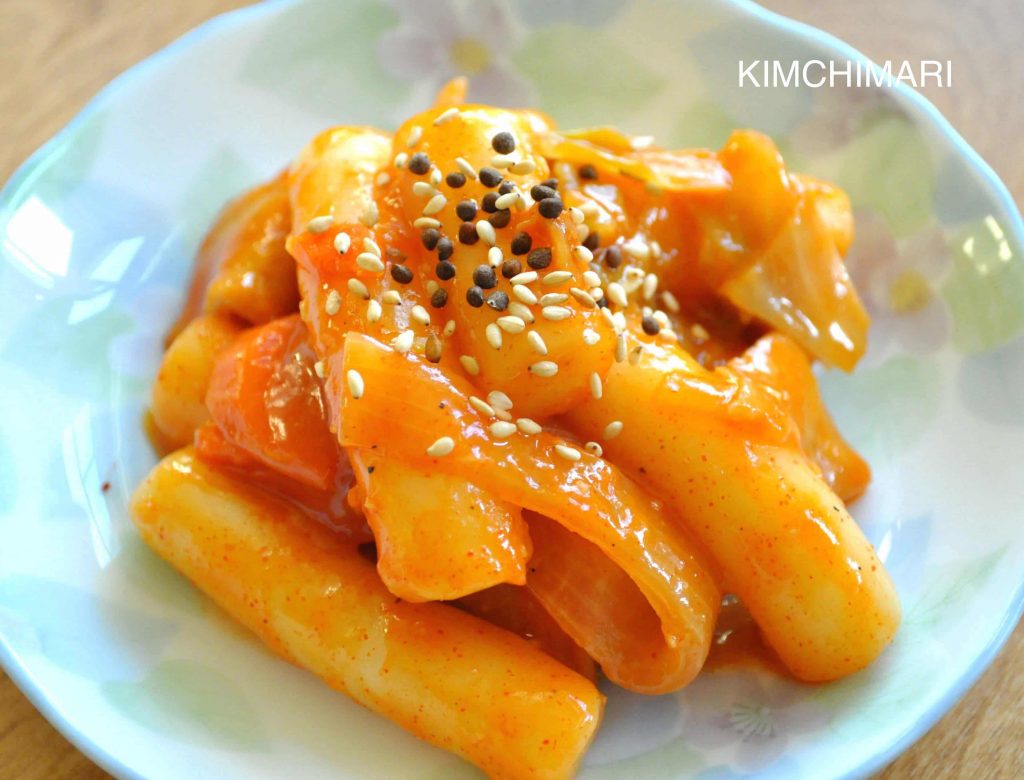
What is Jeukseok Tteokbokki?
Jeukseok 즉석 means ‘instant’ and this name comes from the fact that the Tteokbokki is ready instantly at the table and is thus called Jeukseok Tteokbokki. Although, I have to admit – it’s really not accurate as you do have to wait a good 10 min or so before the tteokbokki in the pan is fully cooked and ready to eat.
You can find Tteokbokki (also sometimes spelled ddukbokki) in many different places in Korea – from street carts to restaurants and they are served in so many different ways. There are even restaurants that serve tteokbokki only which are called 떡볶이 집 (“tteokbokki jip” which means House of Ddukbokki) and this is where you will most likely find this version.
These Ttteokbokki houses serve tteokbokki with different sauces (some even with just Jjajang and is not at all spicy!) and with different choices of noodles (쫄면 Jjol myun or 라면 ramen for example). Here’s a picture that I took years ago while visiting a Bongsunyi Tteokbokki Jip near Dongsunwon area. You can see that there’s fish cake, ramen noodles, cabbage and tons of perilla leaves on top.
The tteokbokki you find on the street or bunsik jip 분식집 are almost always the ones without any vegetables but at most fish cakes and maybe some boiled egg. For that version, please check my Simple Tteokbokki recipe.
I didn’t cook it at the table in the pictures you see here but I have definitely cooked it in an electric hot pot at home before and it’s great fun for the whole family.
Spicy Rice Cake (Jeukseok Tteokbokki/Ddukbokki) with fish caked and Vegetables – TABLETOP VERSION
Prep time: 5 min. Cooking time: 20 min Servings: 3-4 Difficulty: Easy
Ingredients (see Recipe Card below)
Directions
1. If the tteokbokki tteok is frozen, defrost in cold water while you prepare other ingredients. The type of rice cakes used for tteokbokki are shaped like little logs but you can also use the thin ovalettes used for Rice Cake Soup. They are all the same tteok but just cut differently.
2. Cut cabbage, carrots and onions and any other vegetables. Korean fish cake (어묵 Uhmook also called 오뎅(oden) which comes from Japanese) comes in various shapes but the ones normally used here is one that comes in thin rectanglular sheets (사각오뎅 Sahgahk Oden). They can be found in the freezer aisle in most Korean markets. I did not get to take a picture of the package but there usually isn’t a whole lot of difference among the different brands so buy whatever looks good to you.
3. Use a saute pan deep enough to hold all the ingredients. Non-stick is easier since the tteok tends to stick to the bottom of the pan. Add water or anchovy stock, carrots, cabbage and onions to the pan and bring to a boil.
4. Add gochujang, garlic, soy sauce, salt and sugar to this mixture while you wait for it to boil.
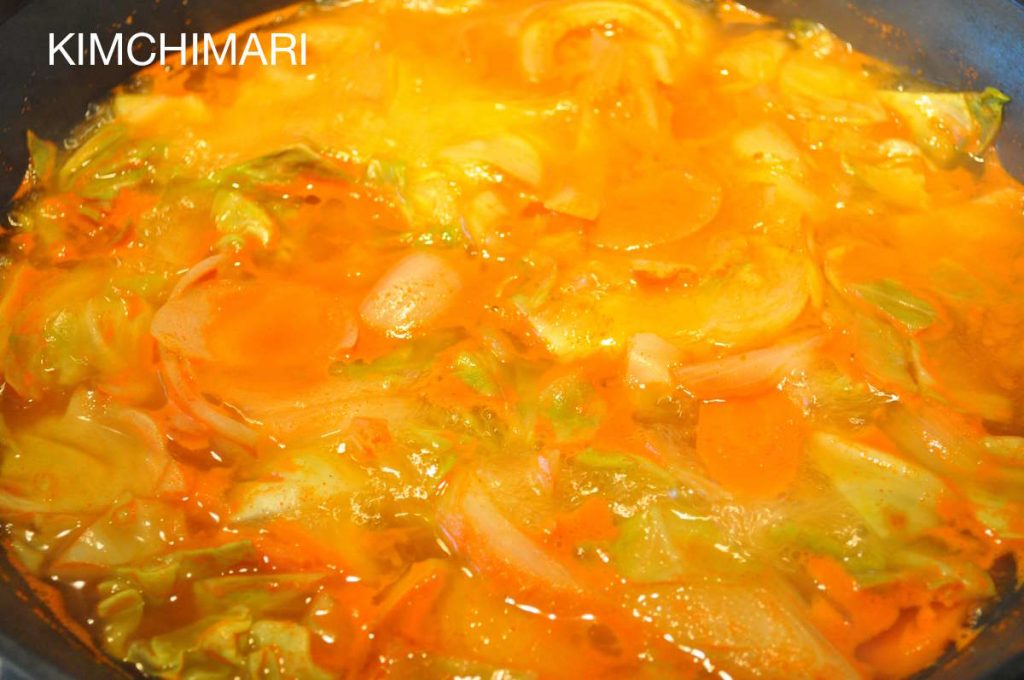
5. Once it starts to boil, add rice cakes, fish cake and stir. Simmer for 20 min. stirring occasionally to make sure the dduk doesn’t burn at the bottom. Taste a piece of the dduk when it’s close to 20 min and adjust your seasonings. Don’t taste it in the beginning because the seasoning will not have fully penetrated into the dduk yet and it will taste very bland. Add ketchup to add that little extra something at the end. Sprinkle some black pepper.
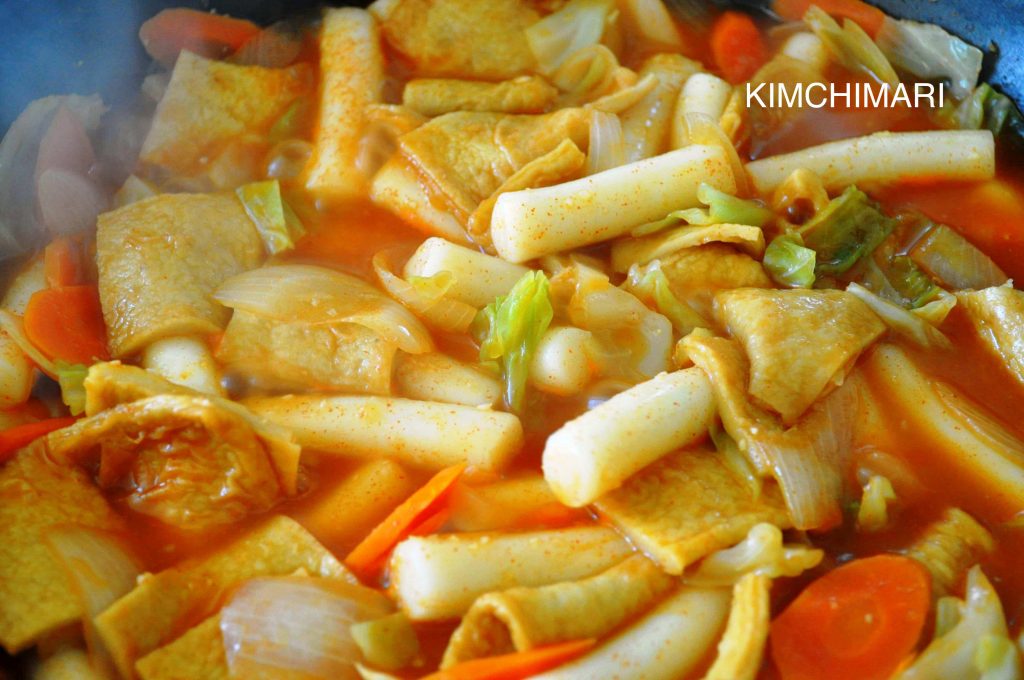
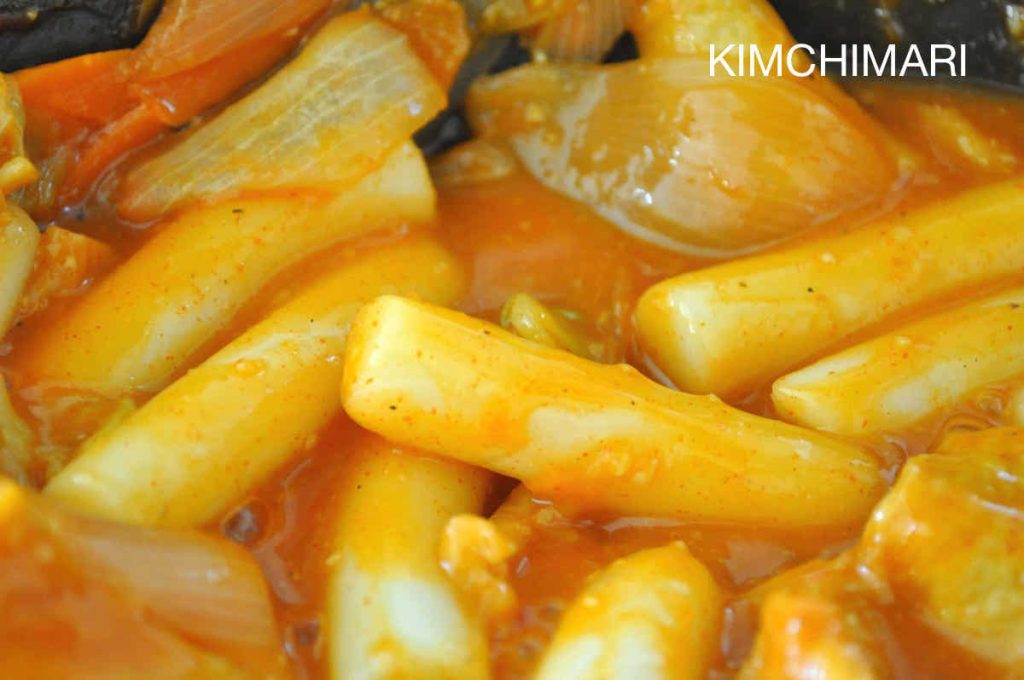
What other things can I add to tteokbokki ?
- Ramen noodles – you can add ramen noodles directly into the tteokbokki while it is cooking. However, this is a bit risky for 2 reasons – the noodles soak up the liquid very quickly so you will have to keep adding extra water; it’s very easy to overcook the noodles which makes the whole dish into one giant blob of tteok… SO… I recommend that you boil the ramen noodles separately in water (make sure you cook it al dente) and then just mix it in quickly at the very end.
- Jjol Myun (쫄면) – this noodle is very stringy, chewy and adds great texture to the dish. Add this when you add the dduk and it should cook together nicely. You will need extra water for this too.
- Boiled eggs – make some hard boiled eggs and add it to the tteokbokki. The savory, spicy sauce goes very well with the egg.
Why doesn’t this tteokbokki taste like the ones I eat at restaurants or on the street?
- MSG… – if you really want to get that taste, you will have to add some MSG or some variation of that like dashida(다시다).
- ramen soup powder – another way to get a similar taste is to sprinkle some ramen soup powder (which has MSG) on your ddukbokki.
Spicy Rice Cake (Tteokbokki) with Vegetables and Fish Cake
Ingredients
- 16 oz rice cake for tteokbokki
- 2 sheets Korean rectangular fish cake (Sahgahk Oden, cut into squares)
- 2 cups cabbage (cut into strips or 1 in squares)
- 1 carrot (sliced)
- 1/2 onion (sliced)
- 1 Tbsp chopped garlic (or 1 tsp garlic powder)
- 3 cups water (or anchovy stock is even better)
- 2 Tbsp gochujang (spicy red bean paste)
- 1 Tbsp sugar
- 1 Tbsp soy sauce
- 1/4 tsp salt
- Dash of black pepper
- 1 tsp ketchup (optional)
- 1 tsp guk kanjang (Korean soy sauce for soups – optional)
Other optional vegetables
- 1-2 green onions (cut into 2 in long pieces)
- 2-3 perilla leaves (cut into thin strips)
Instructions
- If the rice cakes are frozen, defrost in cold water while you prepare other ingredients. The type of rice cakes used for tteokbokki are shaped like little logs but you can also use the thin ovalettes used for Tteok Guk. They are all the same rice cakes but just cut differently.
- Cut cabbage, carrots and onions and any other vegetables. Korean fish cake (Uhmook also called oden which comes from Japanese) comes in various shapes but the ones normally used here is one that comes in thin rectanglular sheets (Sahgahk Oden). They can be found in the freezer aisle in most Korean markets.
- Get a saute pan deep enough to hold all the ingredients. Non stick is easier since the dduk tends to stick to the bottom of the pan. Add water or anchovy stock, carrots, cabbage and onions to the pan and bring to a boil.
- Add gochujang, garlic, soy sauce, salt and sugar to this mixture while you wait for it to boil.
- Once it starts to boil, add tteok, fish cake and stir. Simmer for 20 min. stirring occasionally to make sure rice cakes don’t burn at the bottom. Taste when it’s close to 20 min and adjust your seasonings. Don’t taste it in the beginning because the seasoning will not have fully penetrated into the tteok yet and it will taste very bland. Add ketchup to add that little extra something at the end. Sprinkle some black pepper.
- And if you are going to add green onions or perilla leaves, add it at the end, right before turning your heat off.
Tips & Notes:
- Ramen noodles – you can add ramen noodles directly into the ddukbokki while it is cooking. However, this is a bit risky for 2 reasons – the noodles soak up the liquid very quickly so you will have to keep adding extra water; it’s very easy to overcook the noodles which makes the whole dish into one giant blob of dduk… SO… I recommend that you boil the ramen noodles separately in water (make sure you cook it al dente) and then just mix it in quickly at the very end.
- Jjol Myun (쫄면) – this noodle is very stringy, chewy and adds great texture to the dish. Add this when you add the dduk and it should cook together nicely. You will need extra water for this too.
- Boiled eggs – make some hard boiled eggs and add it to the ddukbokki. The savory, spicy sauce goes very well with the egg.
Nutrition Information:
.


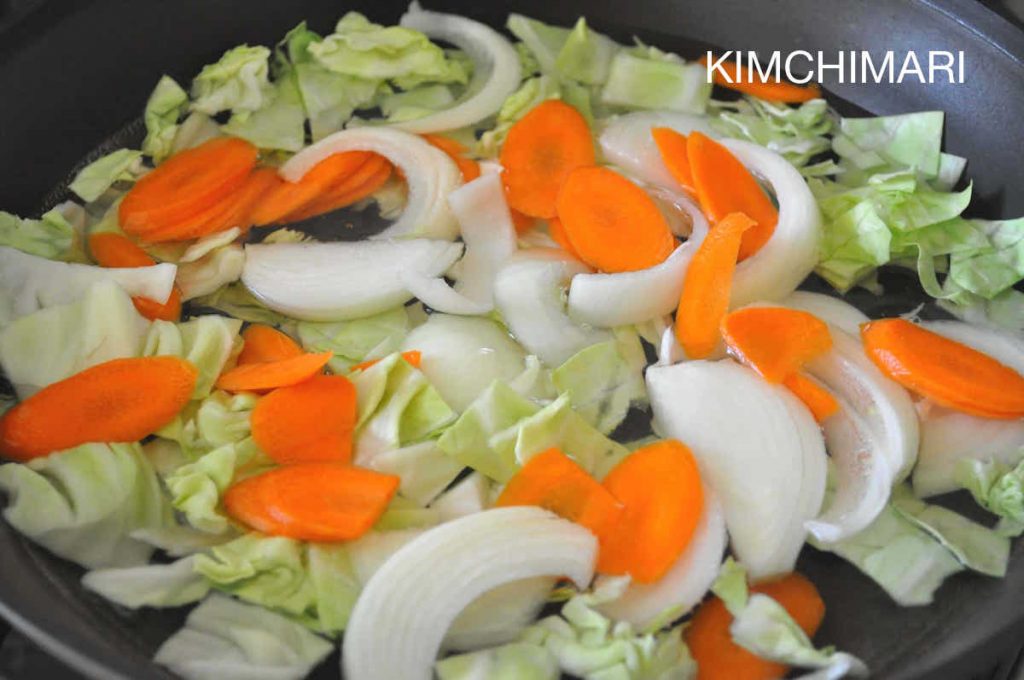
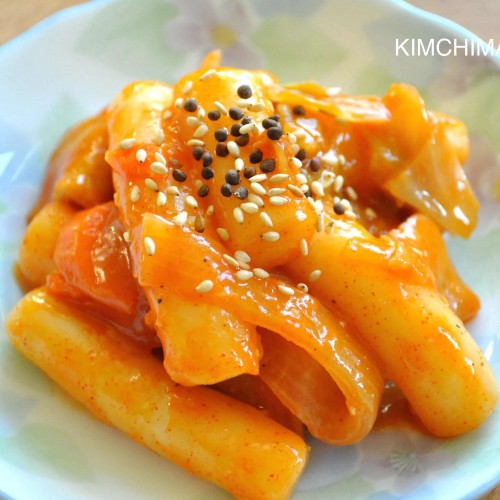
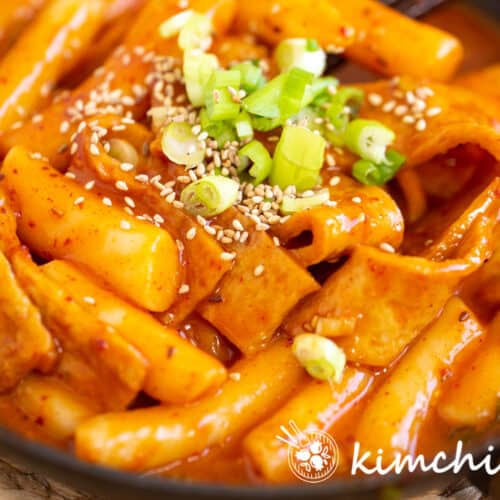
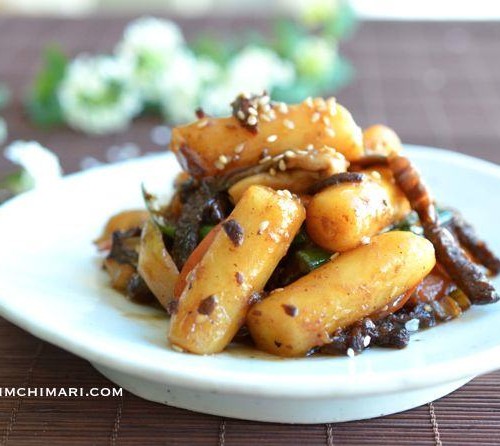
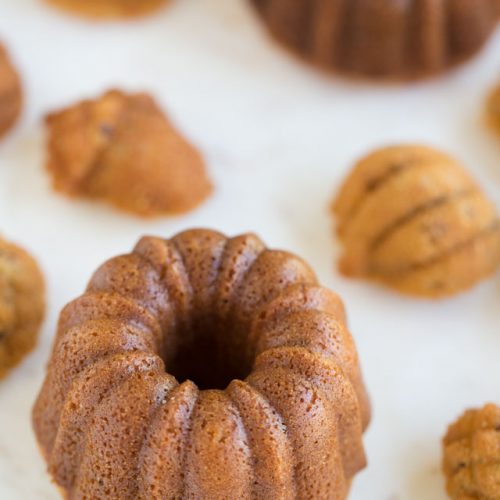
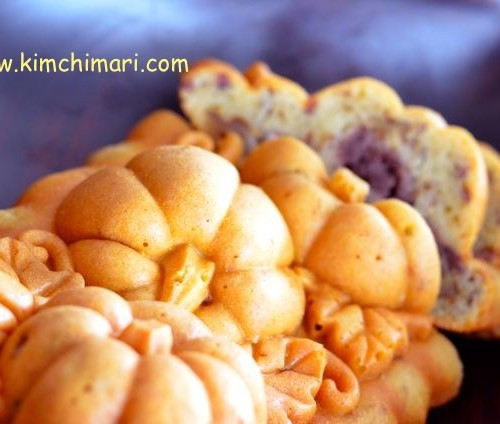
















Loved this recipe. I am going to try it tonight. I love the ingredients.
Wonderful!! Thank you!